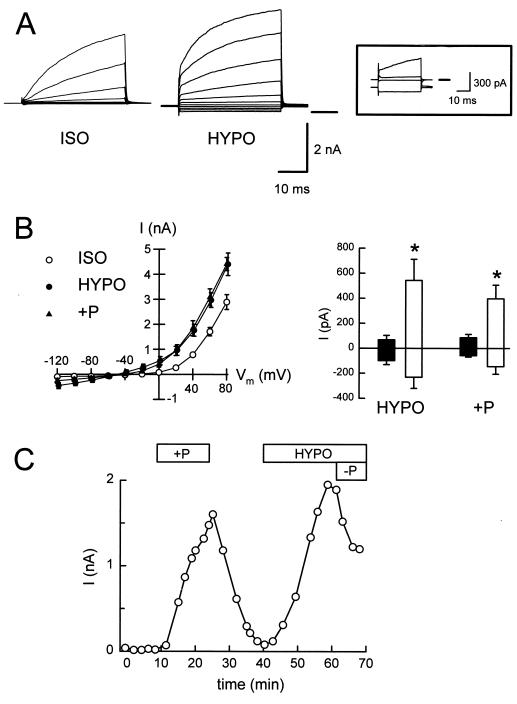Figure 2.
Whole-cell currents in isolated polarized NGB epithelial cells. Control solutions were KCl-based (pipette), and NaCl-based (bath), respectively. Increases in cell volume were elicited by a 28% reduction in bath osmolality (NaCl reduction; HYPO) or by applying positive pressure to the pipette (0.5–3 kPa; +P). (A) Whole-cell currents, control, and HYPO. Pulse protocol: 20-mV steps from −120 mV to +80 mV for 40 ms, from a holding potential of −60 mV. Insert depicts control and ISO currents near ECl (0 mV, upward deflections) and near EK (−80 mV, downward traces). In this example, both currents were larger in HYPO. (B, Left) I–V relationships from six experiments. (B, Right) IK (upward bars; measured at ECl) increases significantly (asterisks) in HYPO or +P (open bars), relative to control (filled bars). ICl (downward bars; measured at EK) did not change significantly. (C) Time course of whole-cell currents at Vm = 0 mV (near ECl). Reversible effect of raising the pipette hydrostatic pressure (+P; 1 kPa). The current elicited by HYPO was reversed by decreasing the pipette pressure (−P; −1 kPa).

